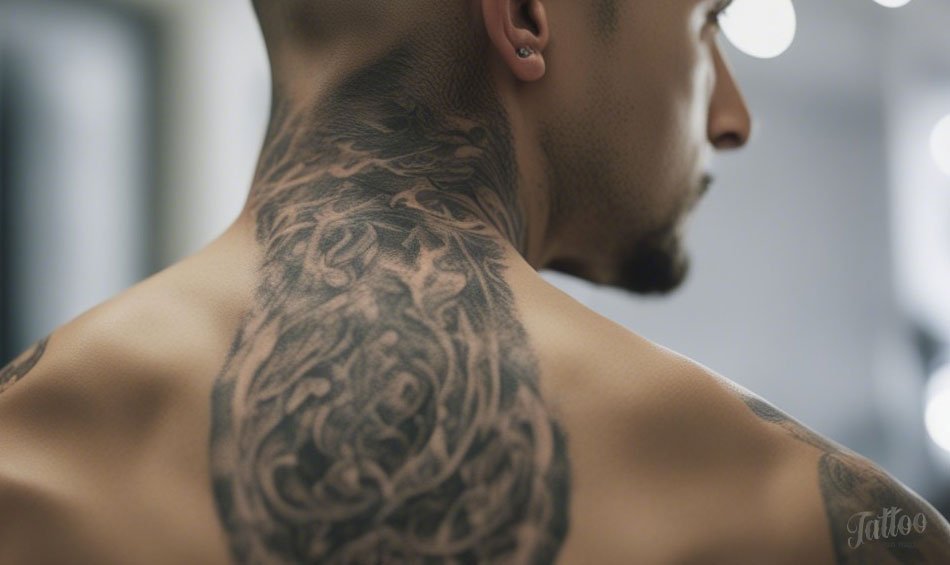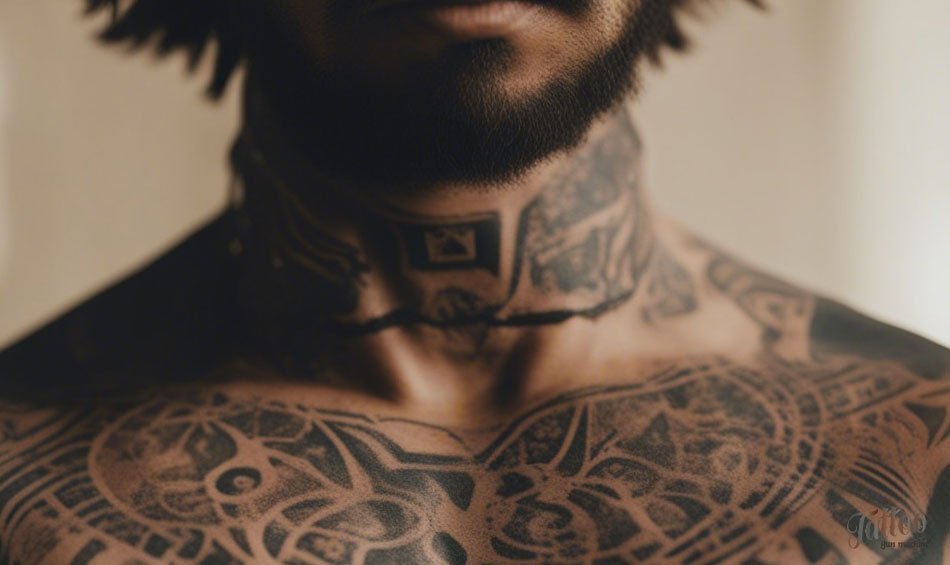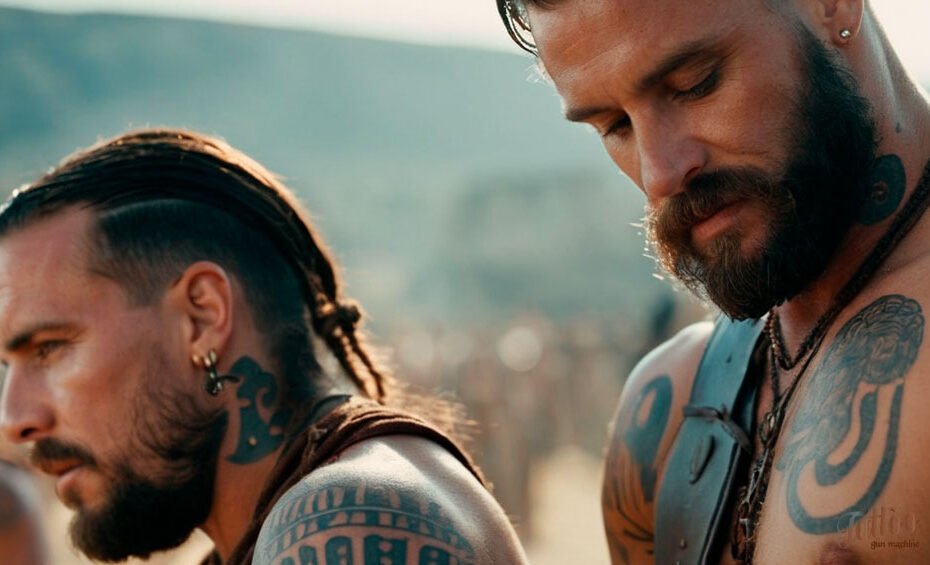Curiosity has always surrounded the ancient Celts and their fascinating cultural practices. Did the Celts have tattoos?
This burning question has intrigued historians, archaeologists, and tattoo enthusiasts alike. Delve into the enigmatic world of the Celtic people, as we unravel their possible connections to body art and explore the significance it held in their society.
The Celts, known for their intricate craftsmanship and mysterious rituals, left behind a rich legacy that still captivates us today. Strong evidence suggests that tattoos played a role in their culture, serving as symbols of meaningful representations.
Recent archaeological discoveries have unearthed preserved human remains adorned with elaborate tattoos, further fueling the belief that body art was indeed prevalent among the Celts.

These captivating tattoos, created using natural pigments such as woad and iron oxide, showcased intricate patterns inspired by nature and mythical beings.
The symbolism behind Celtic tattoos is equally intriguing. Each design held deep meaning, often reflecting elements of spiritual beliefs, social status, or personal identity. Knotwork designs, in particular, symbolized eternal life and interconnection.
Other popular themes included animals, such as the mighty stag and the mythical griffin, representing strength and protection. As we delve deeper into the subject, we’ll uncover the secrets behind the Celts’ fascination with body art, shedding light on a mesmerizing aspect of their remarkable civilization.
Embark on a journey through time as we explore the mysterious world of Celtic tattoos. Uncover the ancient traditions and symbolism behind these mesmerizing artworks, and discover how they remain an everlasting testament to a culture that thrived centuries ago.
Exploring the Myth: Did the Celts Have Tattoos?
The topic of Celtic tattoos has long been shrouded in myth and mystery. Many people believe that the ancient Celts adorned their bodies with intricate tattoo designs, but is there any truth to this popular belief?
Historical evidence regarding Celtic tattooing is scarce, leading to much speculation and debate among historians and tattoo enthusiasts alike. While there are references to body art in Celtic mythology and folklore, there is limited concrete evidence of actual tattoos, making it difficult to make definitive statements about Celtic tattoo practices.

One argument often put forth in favor of Celtic tattooing is the discovery of ancient figurines and statues featuring elaborate patterns on their bodies. These patterns are often interpreted as tattoos, suggesting that the Celts did indeed engage in the art of tattooing. However, it is important to note that these interpretations are subjective and open to various interpretations.
Another key point to consider is that the Celts were skilled metalworkers and craftsmen, known for their intricate jewelry and weaponry designs. It is plausible that the patterns seen on Celtic artifacts were not tattoos but rather decorative motifs incorporated into their artwork.
Furthermore, the lack of written records on Celtic tattooing leaves us with little information to draw upon. While the ancient Celts were known for their love of oral tradition, it is difficult to determine if tattooing was a cultural practice that left no written trace, or if it was simply not as prevalent as some may believe.
In conclusion, the question of whether the Celts had tattoos remains unanswered. While there are indications of body art in Celtic culture, there is no concrete evidence that definitively confirms the existence of tattoos among the Celts.

As such, the belief that tattoos were a common practice in Celtic society should be approached with caution and skepticism. Until further archaeological discoveries or written evidence emerges, the mystery of Celtic tattoos will continue to captivate our imagination.
Did the Celts have a specific meaning or symbolism behind their tattoos?
The Celts did have specific meanings and symbols associated with their tattoos. Tattoos held great significance in Celtic culture, representing their identity, beliefs, and values. They believed that tattoos had protective and magical properties. Different tattoo designs were associated with various meanings.
One popular Celtic tattoo symbol is the Celtic knot, which represents the interconnectedness of life and eternity. These intricate patterns are often used as band designs or woven into more complex tattoo motifs.
Another common symbol is the Celtic tree of life, which symbolizes the connection between earth and heaven. The branches and roots of the tree interweave to demonstrate the balance and harmony of nature.
Animals also held significant meaning in Celtic tattoos. For example, the bear represented bravery and motherhood, while the raven symbolized intelligence and wisdom. The stag was associated with power and masculinity, and the wolf represented loyalty and protection.
Celtic warriors often adorned themselves with tattoos to mark their achievements and establish their social status. These tattoos served as symbols of strength and courage in battle.
Overall, Celtic tattoos held deep cultural and spiritual meanings for the Celts, representing their beliefs, heritage, and personal journey in life.
What were the most common tattoo designs among the ancient Celts?
The ancient Celts had a rich tattoo culture, and their designs were deeply tied to their belief systems and cultural traditions. While there is limited direct evidence of specific designs, archaeological findings and ancient texts provide some insight into the most common tattoo designs among the ancient Celts.
One of the most prevalent tattoo designs among the ancient Celts was the triskelion, also known as the triple spiral. This symbol consists of three interlocking spirals and represents eternal movement and progress. It is believed to have had spiritual significance for the Celts, potentially representing the cycle of life, death, and rebirth.
Another common tattoo design among the ancient Celts was the tree of life. This symbolizes the interconnectedness of all living things and represents fertility, growth, and wisdom. The tree of life is often depicted with branches reaching towards the sky and roots digging deep into the earth, symbolizing the connection between heaven and earth.
Animals also played a significant role in Celtic tattoo designs. The celtic wolf was often depicted to symbolize loyalty, strength, and protection. The celtic boar represented courage and fearlessness. The celtic horse symbolized power, freedom, and endurance. These animal designs reflected the Celtic people’s close relationship with nature and their reverence for its power.
Other popular tattoo designs among the ancient Celts included various knotwork patterns such as the triquetra and the shield knot. These intricate designs were often used as decorative elements in Celtic art, and they are believed to have held symbolic meanings related to protection, unity, and spirituality.
It is important to note that the exact meanings and interpretations of these tattoo designs may have varied among different Celtic tribes and individuals.
Additionally, due to the limited surviving evidence, our understanding of ancient Celtic tattoos is still evolving. Nonetheless, these designs offer a glimpse into the rich tattoo traditions of the ancient Celts.
How did the tattooing process differ among the Celts compared to other ancient cultures?
The tattooing process among the Celts differed in several ways compared to other ancient cultures.
- Firstly, the Celts practiced a form of tattooing called “woad” tattooing, which involved the use of a blue dye derived from the woad plant. This allowed them to create intricate designs and patterns on their skin.
- Secondly, the Celts viewed tattoos as an important symbol of their identity and social status. It was common for warriors to have tattoos that represented their achievements in battle, while women often had tattoos associated with fertility and motherhood.
- Thirdly, the tattooing process itself was considered sacred among the Celts. It was often performed by a specialized tattoo artist known as a “bruit.” These bruits possessed the knowledge and skills to create elaborate and meaningful tattoo designs.
- Finally, the placement of tattoos among the Celts was also significant. They believed that certain areas of the body were more spiritually powerful than others, so tattoos were strategically placed to harness and channel these energies.
In contrast, some other ancient cultures primarily used tattoos for medicinal or ritualistic purposes, and their techniques and symbolism differed accordingly.
Did the Celts use tattoos for religious or spiritual purposes?
The Celts did use tattoos for religious or spiritual purposes. Tattooing was a common practice among the ancient Celtic tribes, and it held important cultural and spiritual significance for them. Tattoos were seen as a way to connect with their gods, ancestors, and nature.
The Celts believed that tattoos had magical properties and could provide protection, luck, and guidance. They often inked symbols and depictions of animals, plants, and mythical creatures on their bodies, as each design held a specific meaning and represented a certain aspect of their spirituality.
Tattoos were also used as a form of personal identification and social status among the Celts. Warriors would often adorn their bodies with intricate tattoos to symbolize their bravery and achievements in battle.
It was believed that these tattoos offered them supernatural powers and aided them in combat.
Overall, tattoos played a significant role in Celtic religious and spiritual practices, serving as a means of connecting with their beliefs, traditions, and ancestral spirits.
How did the Celtic tattooing process differ from other ancient cultures?
The Celtic tattooing process differed from that of other ancient cultures in several ways. Firstly, the designs and symbols used in Celtic tattoos were distinctively different. Celtic tattoos often incorporated intricate knotwork patterns, zoomorphic animal forms, and symbolism associated with Celtic mythology and spirituality.
Secondly, the method of tattooing itself was unique to the Celts. Unlike some other cultures which used needles or sharp instruments to puncture the skin, the Celts preferred a technique known as “woad staining.”
Woad was a blue dye derived from a plant that was crushed and mixed with water to create a paste. This paste was then applied to the skin using a comb-like instrument or a brush. The dye would seep into the punctured skin, resulting in a permanent blue tattoo.
Another notable difference was the cultural significance attached to Celtic tattoos. Tattoos held great importance in Celtic society as they were seen as a way to connect with one’s ancestors, display bravery, and represent tribal affiliations. They were also believed to possess magical and protective qualities, serving as talismans.
Lastly, the placement of Celtic tattoos often differed from other cultures. While some ancient civilizations focused on specific body parts for their tattoos, such as the face or arms, the Celts were known to tattoo various parts of the body, including the chest, back, and limbs.
This allowed for larger and more elaborate designs that could encompass multiple body areas.
What were the most common tattoo designs found on Celtic warriors?
The most common tattoo designs found on Celtic warriors were symbols and patterns that held significant cultural and spiritual meaning. Celtic warriors often adorned their bodies with intricate knotwork designs, which symbolized an eternal connection and continuity. These knotwork tattoos were typically inspired by natural elements such as animals, trees, and rivers.
Another popular design among Celtic warriors was the triskelion, also known as the triple spiral. This symbol represented the three realms of land, sea, and sky, as well as the eternal cycle of life, death, and rebirth.
Additionally, warriors would often get tattoos of animal motifs such as wolves, bears, and boars, as they were believed to embody strength, bravery, and protection in battle.
It’s important to note that the exact designs varied among different Celtic tribes and individuals, as tattoos were a personal expression of one’s identity and affiliation.
About Author

- https://t.me/s/tattoogunmachine
- Hello everyone! My name is Jade Blunt, and I'm a passionate tattoo enthusiast. Let me share a bit about my life and my journey in the world of ink and skin.
Ever since I was a child, I've been drawn to art and creativity in all its forms. However, it was when I turned 18 that I discovered my true passion: tattoos. I remember my first tattoo, a small design on my wrist that marked the beginning of an adventure that would change my life forever.
As my love for tattoos grew, so did my desire to learn more about this fascinating art. I started researching, talking to talented tattoo artists, and immersing myself in the history and culture of tattoos. Every tattoo tells a story, and I wanted to be a part of that narrative.
Over time, I decided to share my passion with the world through my blog, "Tattoo Gun Machine." In this space, I strive to provide valuable information about tattoos, from tips for tattooed skin care to stories of innovative tattoo artists and inspiring designs. My goal is to educate and inspire those who share my love for tattoos, as well as to demystify some of the stigmas surrounding this art form.
My blog has become a corner of the web where the tattoo-loving community can connect, share ideas, and explore new trends. I've also had the privilege of interviewing some of the most talented tattoo artists in the world, who share their unique experiences and knowledge within my pages.
But my journey in the world of tattoos doesn't stop here. I'm always on the lookout for new inspiration and challenges. I dream of one day opening my own tattoo studio, where I can bring my own designs to life and continue contributing to this form of artistic expression.
So, if you share my passion for tattoos or are simply interested in learning more about this exciting world, I invite you to join me on my journey at "Tattoo Gun Machine." Together, we can explore the art, culture, and beauty of tattoos as we continue to ink our stories onto the canvas of life. I'll see you on my blog!




